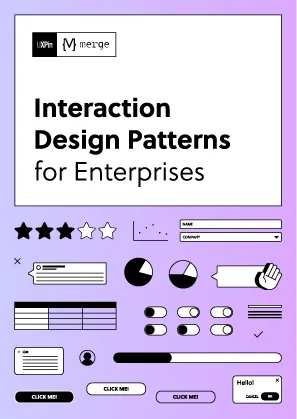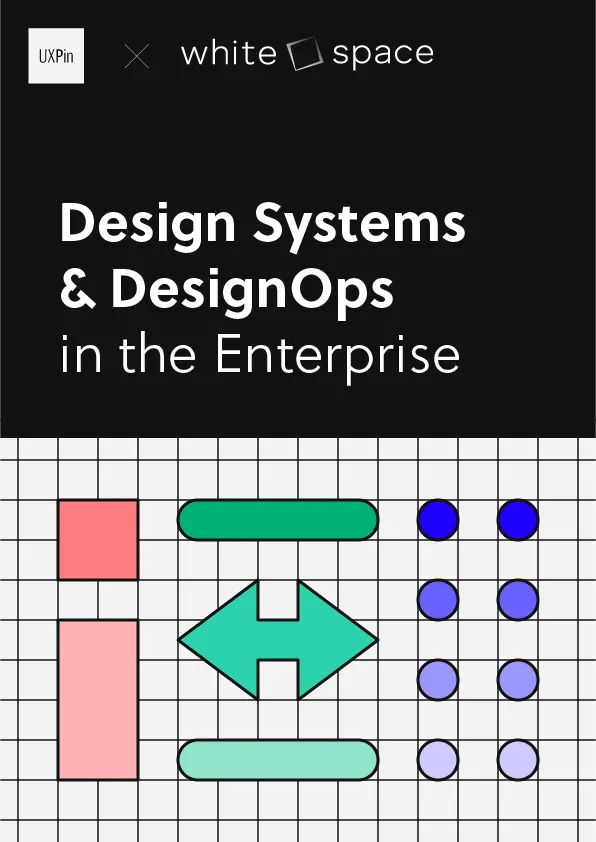NLP-powered test case generation is transforming software testing. These tools let you create test cases using simple English commands, making testing accessible to non-technical team members. This improves collaboration, speeds up workflows, and increases test coverage.
Here are the top tools for NLP-based test case generation:
- UXPin Merge AI: Integrates design and testing workflows, translating design prompts into test cases. Starts at $39/editor/month.
- Testim: Converts English instructions into automated test steps with AI-driven smart locators. Pricing starts at $500/month.
- Functionize: Uses plain English requirements to create cloud-based tests with self-healing features. Custom pricing.
- TestCraft: Codeless testing with a visual interface and AI-based maintenance. Custom pricing.
- mabl: Scriptless testing via a visual recorder and auto-healing capabilities. Starts at $250/month.
- ACCELQ: Codeless automation across platforms with predictive NLP. Starts at $390/month.
- TestSigma: Creates tests from plain English, supports collaboration, and offers a free tier. Paid plans start at $349/month.
Quick Comparison:
| Tool | NLP Features | Platforms Supported | Pricing (USD) | Key Features |
|---|---|---|---|---|
| UXPin Merge AI | Converts design prompts to tests | Web, Mobile (via React) | From $39/editor/month | Design-to-test integration, React support |
| Testim | NLP for test steps, smart locators | Web, Mobile | From $500/month | Self-healing tests, CI/CD integration |
| Functionize | Context-aware test generation | Web, Mobile, API | Custom | Cloud-based, smart analytics |
| TestCraft | Visual modeling, codeless testing | Web | Custom | Visual test flows, Jira integration |
| mabl | Scriptless testing with AI | Web, API | From $250/month | Auto-healing, visual recorder |
| ACCELQ | Codeless NLP-driven automation | Web, Mobile, API, Desktop | From $390/month | Predictive modeling, broad platform support |
| TestSigma | Plain English test creation | Web, Mobile, API | Free tier / $349+ | Real-time collaboration, self-healing |
These tools simplify test creation, reduce manual effort, and improve accuracy. Choose based on your team’s needs, such as platform support, design tool integration, or pricing flexibility.
Test Case Creation Using Your Natural Language
1. UXPin Merge AI
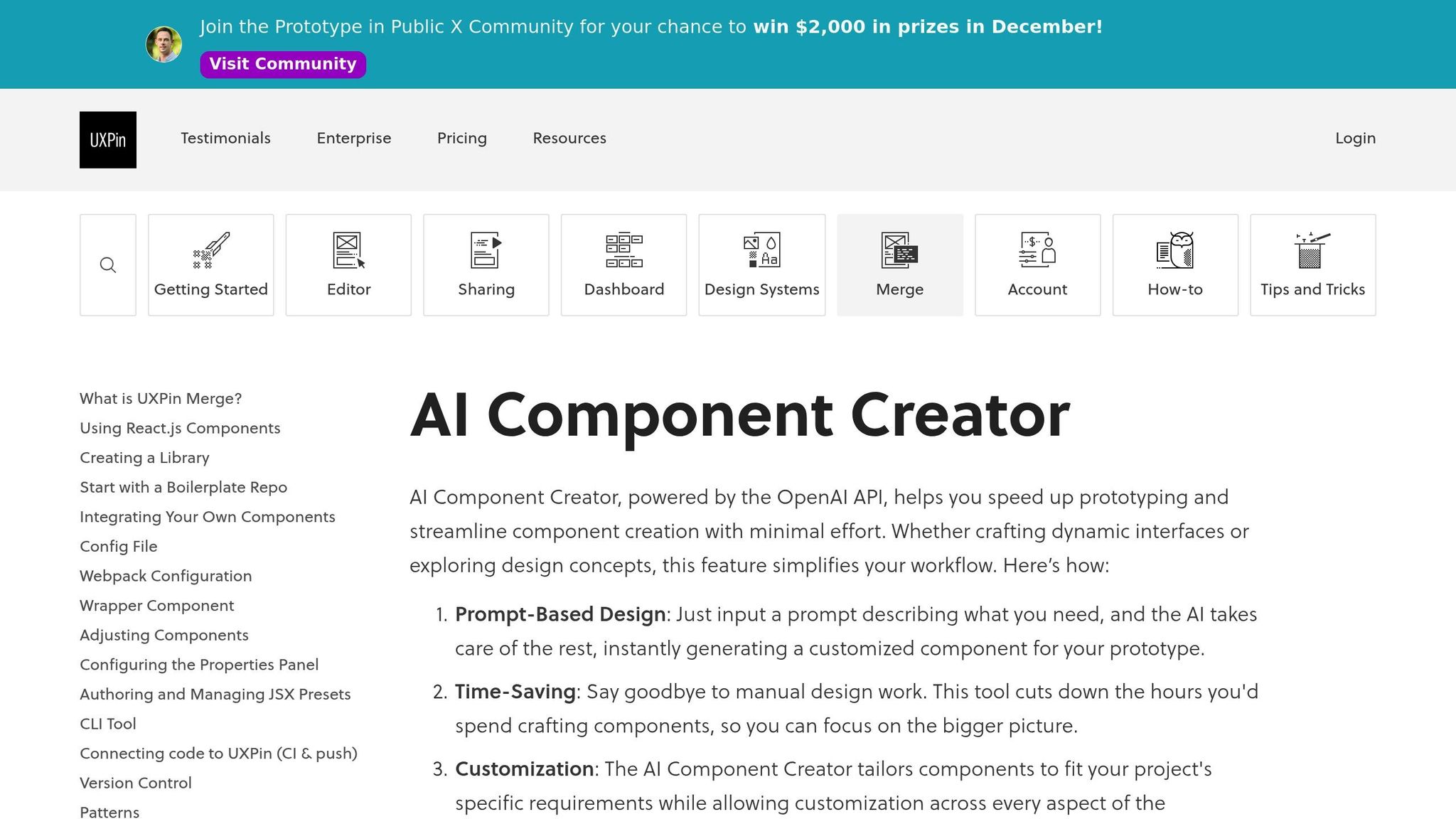
UXPin Merge AI connects the dots between design and testing by transforming plain English design prompts into automated test cases. This platform uses artificial intelligence to seamlessly link design specifications with testing workflows, making it a powerful tool for teams focused on refining user experiences.
Turning English Prompts Into Test Cases
At the heart of UXPin Merge AI is its AI Component Creator, which relies on models like OpenAI and Claude. This feature translates English descriptions into code-supported test cases. For instance, when a designer builds a login flow in UXPin, the AI steps in to create relevant test cases, such as:
- "Ensure the login button activates when both username and password fields are filled."
- "Check for error messages when invalid credentials are entered."
These test cases are directly tied to the design’s logic and interactions, ensuring they are both relevant and thorough. Beyond this, the AI can process user stories, project requirements, and design specifications written in plain English, converting them into test scenarios that reflect actual user behavior and edge cases.
Seamless Workflow Integration
What sets UXPin Merge AI apart is its tight integration with design and prototyping workflows. Test case generation becomes a natural extension of the design process. Designers and developers work with the same React-based components, ensuring that the code serves as the single source of truth. This unified approach allows teams to validate UI logic and user flows while automatically producing test cases that mirror real-world interactions.
This integration is particularly effective during prototyping. By combining design and testing in one workflow, teams can iterate quickly and ensure their prototypes align with real user experiences. Larry Sawyer, Lead UX Designer, shared his experience:
"When I used UXPin Merge, our engineering time was reduced by around 50%. Saving significant engineering time at scale."
High-Fidelity Prototyping and Validation
UXPin Merge AI supports interactive prototypes equipped with advanced interactions, variables, and conditional logic that closely resemble the final product. Test cases generated from these prototypes are highly accurate, reducing discrepancies between testing scenarios and actual user behavior. This real-time validation helps catch UI/UX issues early, speeding up the iteration process.
Mark Figueiredo, Sr. UX Team Lead at T. Rowe Price, emphasized the platform’s efficiency:
"What used to take days to gather feedback now takes hours. Add in the time we’ve saved from not emailing back-and-forth and manually redlining, and we’ve probably shaved months off timelines."
Pricing Tailored for US-Based Teams
UXPin Merge AI is priced with US-based teams in mind, offering the Merge AI plan at $39 per editor per month. This plan includes all Advanced features, AI-powered tools, Tailwind CSS integration, and React libraries. The pricing is presented in US dollars and adheres to US localization standards, such as MM/DD/YYYY date formats, comma-separated numbers, and imperial measurement units.
For larger teams, the Company plan at $119 per editor per month and custom Enterprise pricing options provide added benefits like extended version history, advanced security features, and dedicated support. These plans are ideal for compliance-driven organizations needing a robust, integrated design and testing solution.
2. Testim
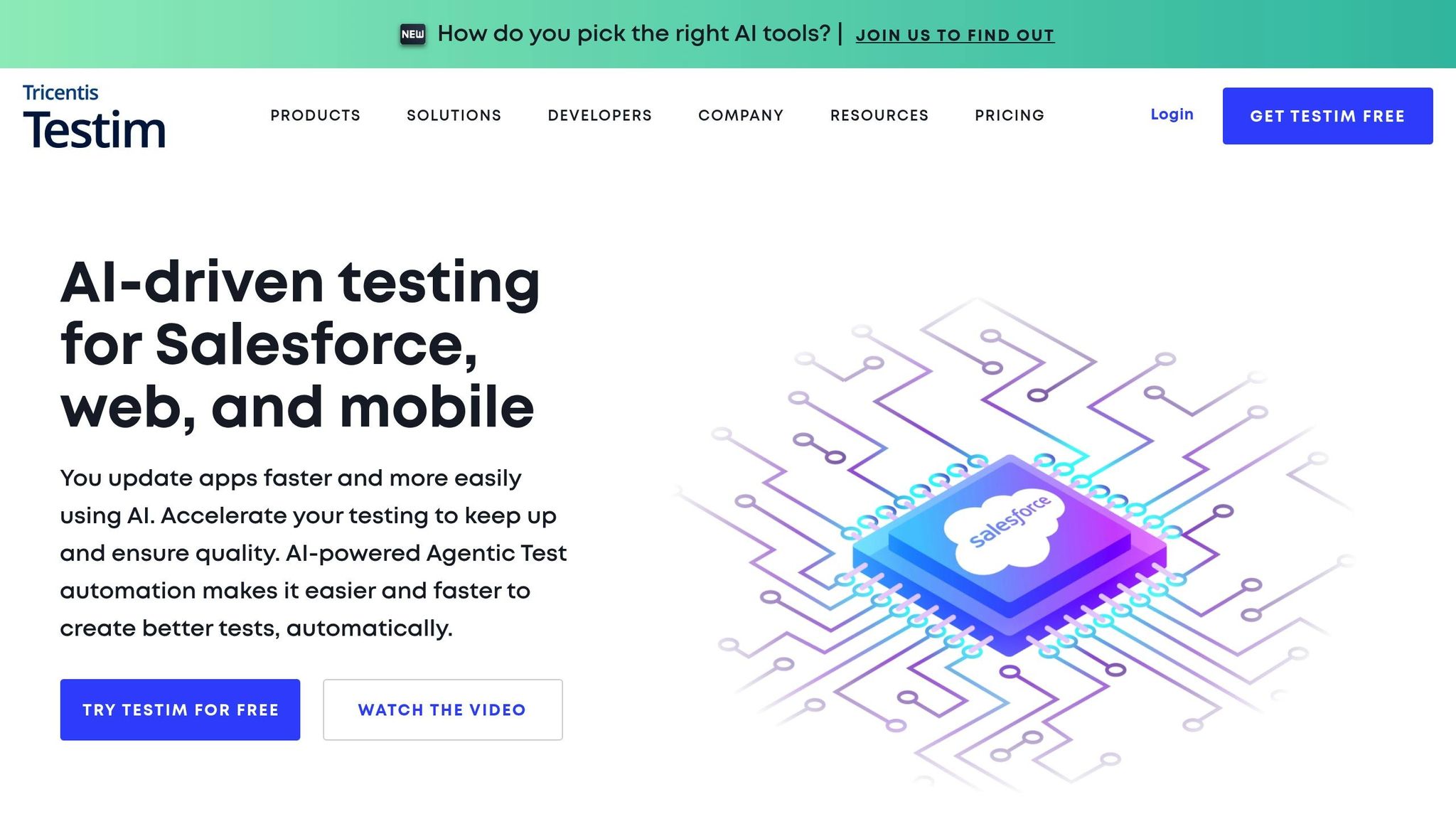
Testim uses natural language processing (NLP) to transform plain English instructions into executable test cases, making it easier for both technical and non-technical team members to create tests for a variety of scenarios, from simple to complex.
NLP Capabilities for Test Case Generation
Testim’s NLP engine takes user instructions and converts them into automated test steps. For example, if a user writes, "Click the login button and verify the dashboard appears", Testim generates the corresponding test steps automatically. This approach goes beyond traditional record-and-playback tools by understanding the context and intent behind the commands.
The platform also employs AI algorithms to offer smart recommendations during test creation. This helps teams achieve broader test coverage while cutting down on manual work. Additionally, Testim uses machine learning to adapt tests to UI changes, ensuring they remain effective even as interfaces evolve.
A standout feature is Testim’s smart locators. These AI-powered locators identify and update dynamic UI elements, reducing the likelihood of flaky tests. By automatically adjusting to interface changes, they keep NLP-generated tests reliable, making Testim a strong fit for modern UI/UX workflows.
Integration with UI/UX Workflows
Testim’s advanced NLP features are complemented by seamless integration with tools like Jira, GitHub, Slack, Jenkins, and CircleCI. These integrations allow teams to link test cases directly to user stories or design specifications, ensuring that tests stay aligned with changing UI/UX requirements.
The platform also supports automated test execution with real-time notifications and clear traceability between tests and their related requirements. For US-based teams, these features simplify collaboration across departments, enabling QA engineers and product managers to work together efficiently on tests written in plain English.
Support for Prototyping and Validation
Although Testim focuses on test automation rather than prototyping, it plays a key role in validating prototypes. Teams can run tests against early-stage UI builds or staging environments, allowing them to verify functional requirements and catch issues early in the development process.
Testim’s self-healing tests, powered by AI, automatically update test steps when UI elements change. This is especially useful during phases when interfaces are frequently updated. Combined with its NLP capabilities, Testim can interpret updated requirements and adjust test cases accordingly, making it a valuable tool for validating outputs from prototyping platforms.
Pricing and Accessibility for US-Based Teams
Testim offers tiered subscription plans based on the number of users and test executions. Pricing typically starts at several hundred dollars per month, making it a better fit for medium to large teams. US-based organizations can pay in US dollars, and enterprise plans include added support and customization options.
While the pricing may not suit smaller teams or startups with tight budgets, enterprise customers gain access to dedicated support and custom integrations. These features are particularly helpful for meeting compliance needs often required by US-based organizations.
Testim is well-suited for teams that need collaboration between technical and non-technical members. Its user-friendly interface and powerful NLP capabilities make it an excellent choice for organizations where multiple team members contribute to creating and maintaining test cases.
3. Functionize
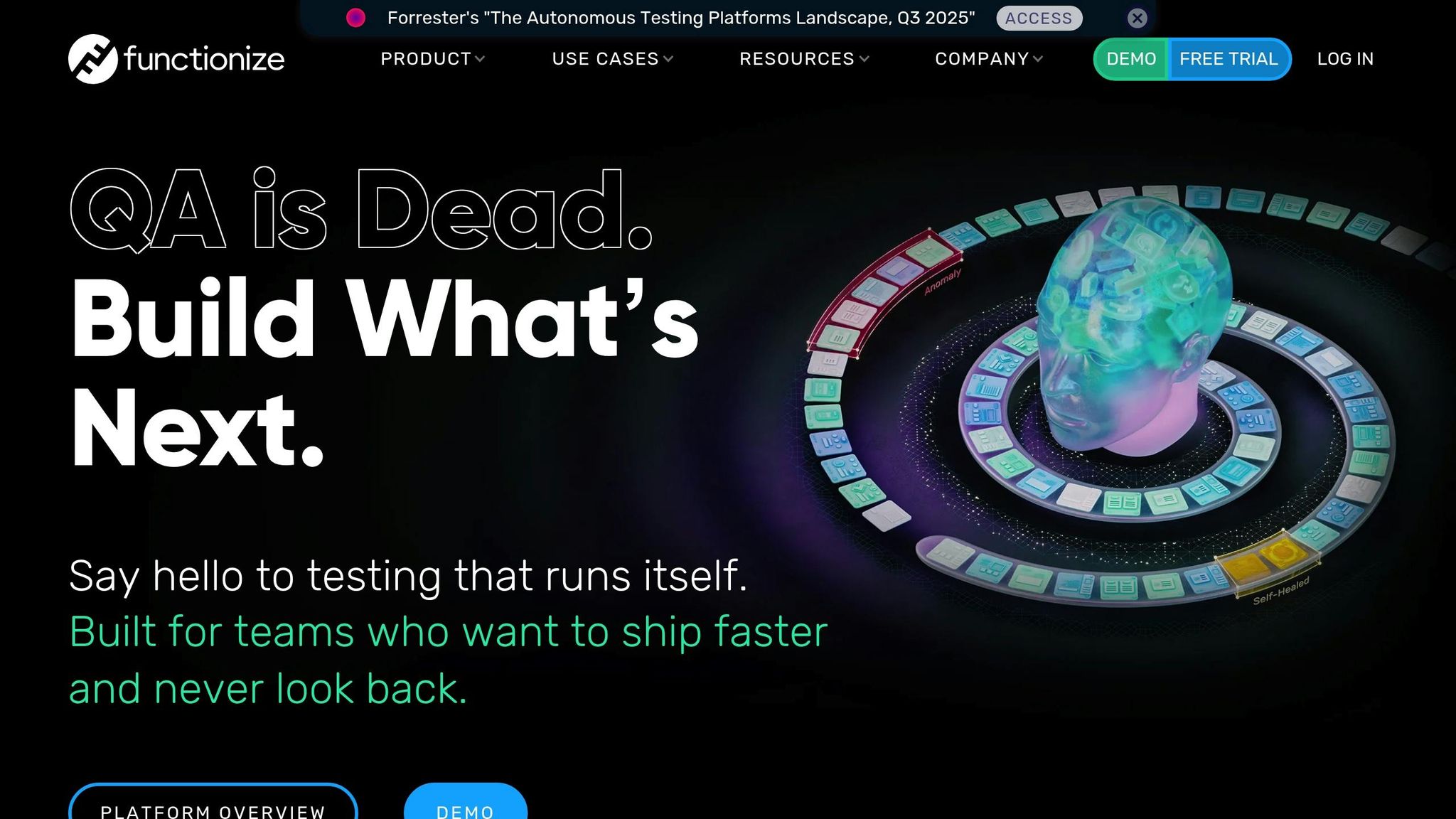
Functionize leverages natural language processing (NLP) to turn plain English requirements into executable test cases. By bridging the gap between business needs and technical test scripts, it simplifies test automation for both technical and non-technical team members. This dual accessibility helps streamline testing workflows and keeps everyone on the same page.
NLP Capabilities for Test Case Generation
Functionize’s NLP engine takes user inputs – like plain English requirements, user stories, or Jira tickets – and transforms them into automated test cases. Using AI, it interprets the intent behind these inputs and generates detailed, step-by-step test instructions in the cloud. For example, a user story such as "As a user, I want to log in and view my dashboard" results in a test that navigates to the login page, inputs credentials, and verifies the dashboard display. Additionally, its self-healing maintenance feature automatically updates tests to accommodate minor UI changes, significantly reducing the time and effort spent on maintenance.
Integration with UI/UX Workflows
Functionize integrates seamlessly with project management tools like Jira, enabling user stories to be directly converted into test cases. This integration promotes continuous collaboration across design, development, and QA teams, ensuring that tests remain aligned with evolving user experience goals. Its cloud-based execution and reporting tools further enhance efficiency, supporting CI/CD workflows and offering smart analytics to simplify debugging for distributed teams.
Support for Prototyping and Validation
The platform is particularly useful for validating early-stage requirements or prototypes. It allows teams to confirm that UI elements and user flows function as intended, even before full development is completed, helping to catch potential issues early in the process.
Pricing and Accessibility for US-Based Teams
Functionize operates on a subscription model tailored for medium to large teams, with pricing details available upon request. Its cloud-based infrastructure supports scalable, parallel test execution, making it an excellent choice for distributed teams looking to enhance their testing capabilities.
4. TestCraft
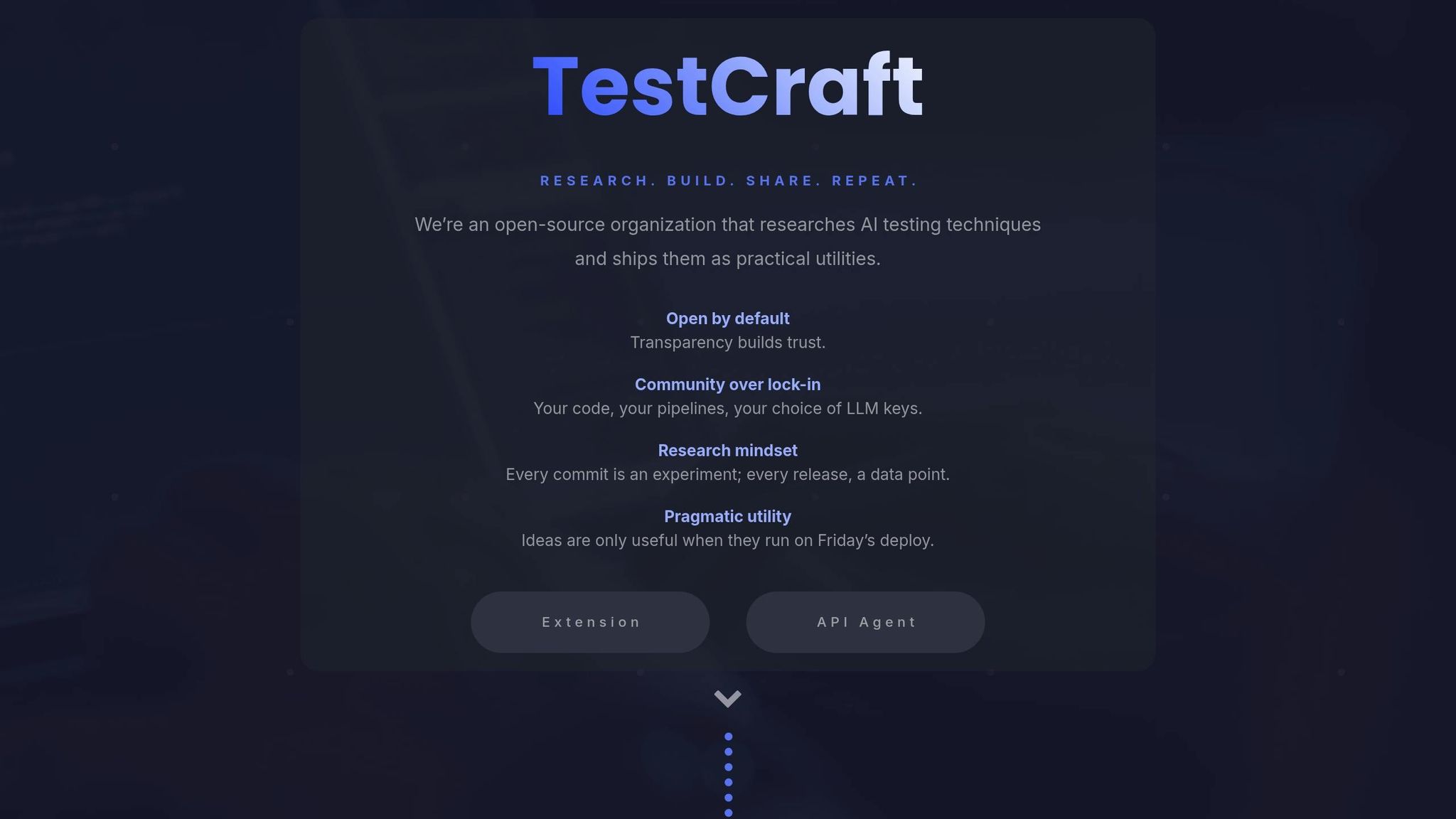
TestCraft is a codeless test automation platform designed to make life easier for teams without extensive programming knowledge. By using AI and natural language processing (NLP), it transforms plain English descriptions into fully functional test cases. This means that even team members who don’t code can create detailed test sequences effortlessly. Plus, it fits seamlessly into UI/UX workflows, making it a versatile tool for design and testing teams.
Integration with UI/UX Workflows
One of TestCraft’s standout features is its visual test modeling interface. This tool allows teams to map user journeys and check UI elements without writing a single line of code. It’s a game-changer for collaboration, enabling designers and testers to work together easily as UI/UX prototypes evolve. TestCraft also connects with widely-used tools like Jira for project management, Jenkins for CI/CD, and version control systems, making it a perfect fit for agile and iterative workflows.
Support for Prototyping and Validation
TestCraft goes beyond just testing – it helps validate UI prototypes as they evolve. Teams can quickly run tests on new or updated interfaces to ensure everything functions as expected. Thanks to its self-healing technology, TestCraft automatically updates test cases when UI elements change, cutting down on manual adjustments and minimizing test flakiness during design updates.
Pricing and Accessibility for US-Based Teams
TestCraft uses a custom pricing model tailored for enterprise and mid-sized teams, with all costs quoted in US dollars. Teams can choose between monthly or annual billing options, making it flexible for different budgets. The platform also offers customer support during US business hours and provides onboarding resources specifically designed for US-based teams. Pricing depends on factors like the number of users, test volume, and integrations, so reaching out to TestCraft directly is the best way to get an accurate quote.
sbb-itb-f6354c6
" tabindex="-1">
sbb-itb-f6354c6
5. mabl
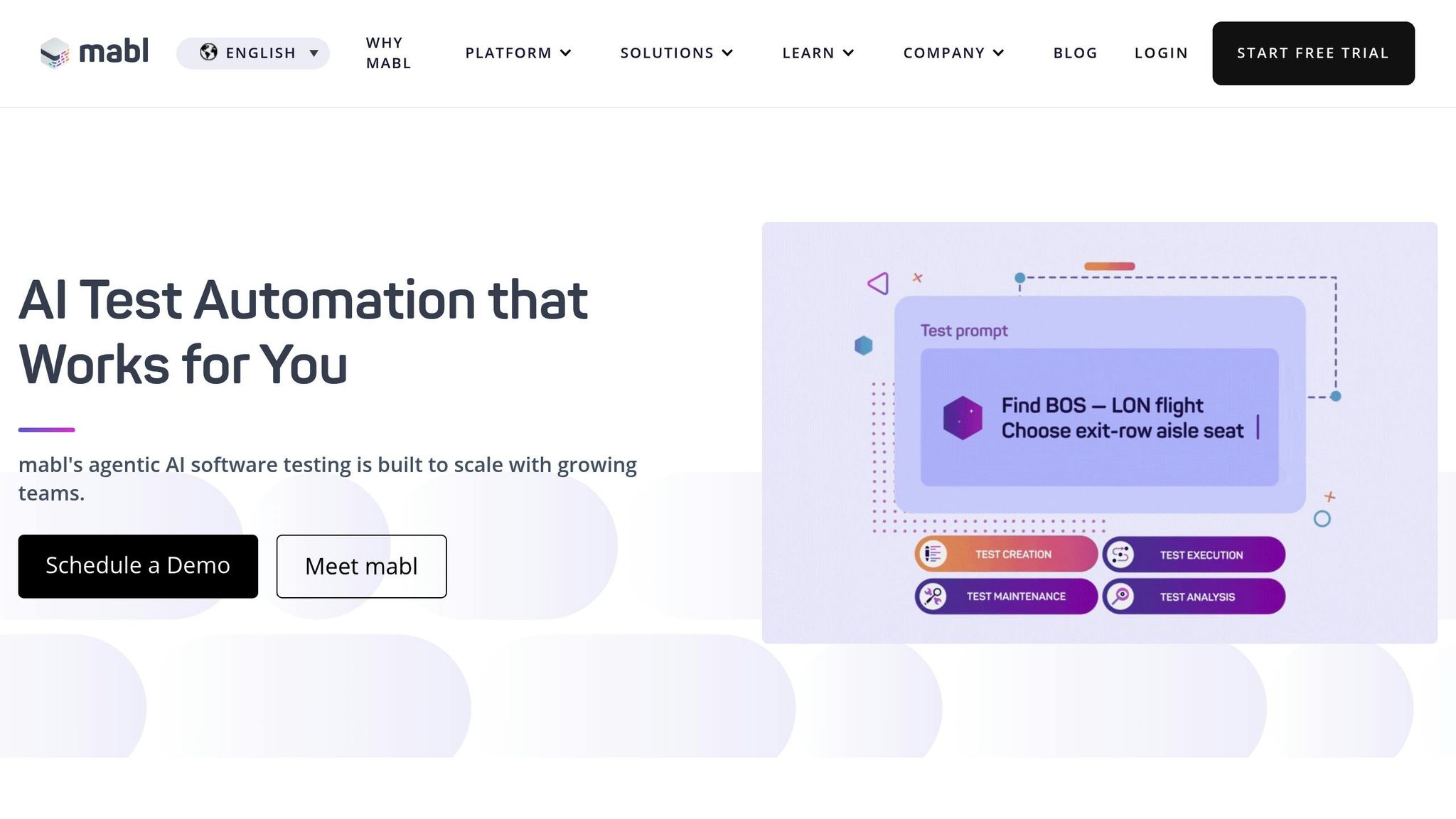
mabl takes a different approach to automated testing compared to NLP-based tools. Instead of relying on natural language processing, it offers AI-powered scriptless testing through a user-friendly visual recorder. While it doesn’t allow plain English test case input, its visual recorder simplifies test creation, making it accessible to team members without coding experience. This makes mabl a solid choice for teams looking for a code-free testing solution.
Integration with UI/UX Workflows
mabl fits seamlessly into development workflows by integrating with CI/CD pipelines and tools like Jira and Slack. This setup ensures that critical user flows are automatically tested whenever there are UI updates. For teams working on UI-intensive applications, the visual recorder is especially helpful. It lets users interact directly with the application while mabl converts their actions into automated test scripts – saving time and effort.
AI-Driven Test Maintenance
One standout feature of mabl is its auto-healing capability, which uses machine learning to adapt to changes in the UI. For example, if a developer updates a button label or rearranges page elements, mabl can automatically adjust the test scripts to reflect those changes. This reduces the need for manual intervention and helps maintain the reliability of regression tests, even as the application evolves.
Pricing
mabl’s premium plan starts at approximately $499 per month, making it suitable for medium to large teams. The platform also offers support tailored to U.S. business practices. Additionally, mabl includes built-in accessibility testing features, helping organizations meet ADA requirements and WCAG standards – an essential consideration for businesses serving diverse audiences.
Though mabl doesn’t support NLP-based test case generation, its combination of visual recording, AI-driven maintenance, and workflow integration makes it an excellent option for teams aiming to scale their testing processes without needing advanced coding skills.
6. ACCELQ
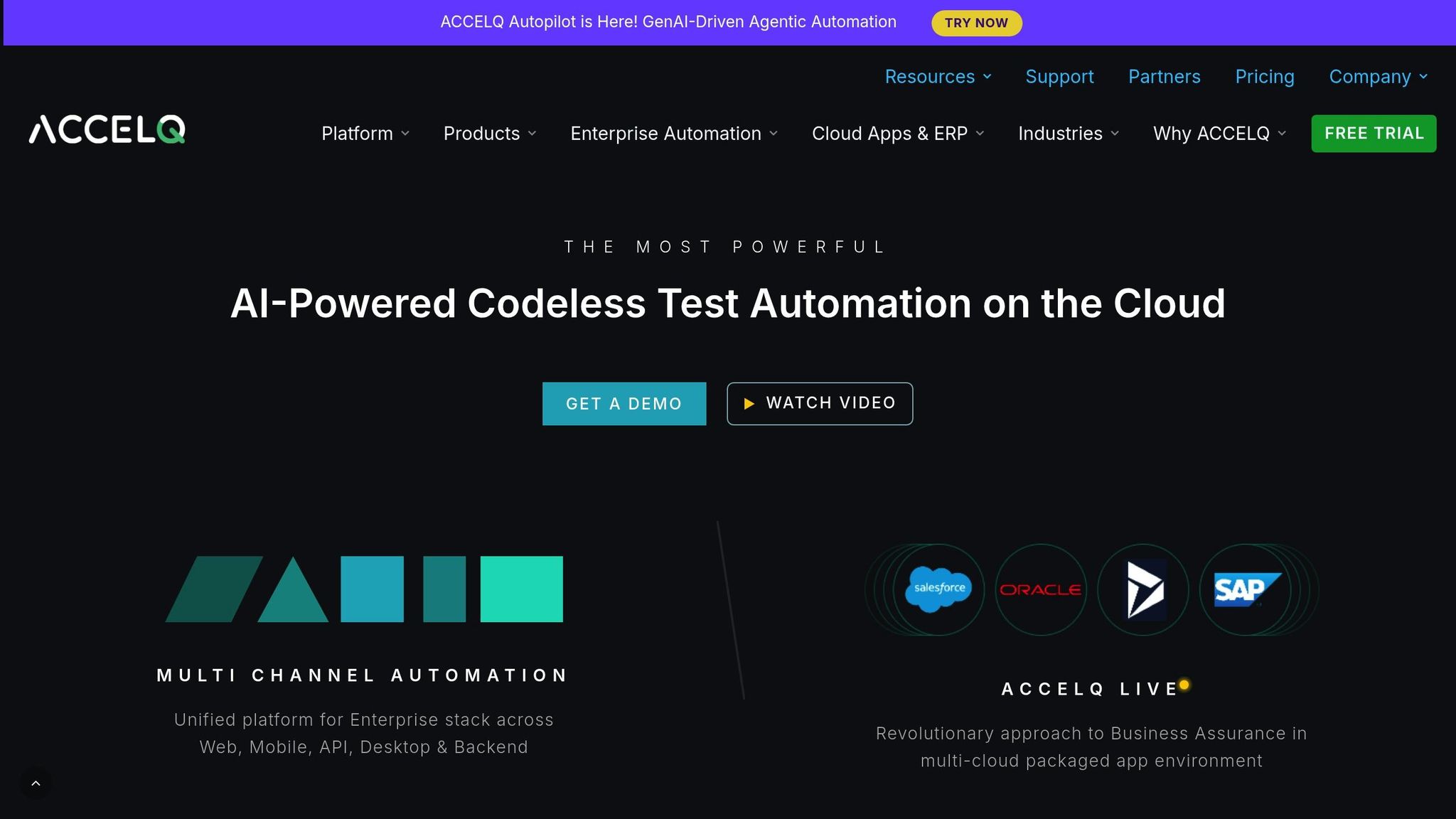
ACCELQ is a no-code automation platform that leverages AI and natural language processing (NLP) to create test cases from plain English descriptions. This approach allows testing operations to scale without requiring any coding expertise.
NLP Capabilities for Test Case Generation
ACCELQ’s NLP engine enables users to define test scenarios in plain English. For instance, a user might write, "Verify that a user can log in with valid credentials and is redirected to the dashboard." The platform then breaks this down into key actions like logging in, validating credentials, and redirecting to the dashboard, automatically generating the necessary test steps. On top of that, its predictive modeling feature suggests additional test scenarios, ensuring thorough coverage for even the most complex applications. This functionality integrates smoothly with workflows for UI/UX and automated testing, making the process efficient and intuitive.
Integration with UI/UX Workflows
ACCELQ works seamlessly with popular project management and CI/CD tools like Jira and Jenkins. This integration fosters collaboration between QA, development, and design teams by linking test cases to user stories, design specs, and UI updates. As a result, automated testing stays aligned with evolving UI/UX requirements. Additionally, ACCELQ supports automation across various platforms, including web, mobile, API, and desktop applications, making it a versatile choice for organizations with diverse tech stacks.
Pricing and Accessibility for US-Based Teams
ACCELQ provides a free trial along with enterprise plans priced in US dollars, catering to distributed teams with region-specific features. Being cloud-based, it’s easily accessible for US teams, offering localized pricing and formats. The platform also complements tools like UXPin by automating the validation of finalized UI components. Its codeless test creation empowers non-technical team members to participate in the testing process, helping to eliminate bottlenecks and streamline operations.
7. TestSigma
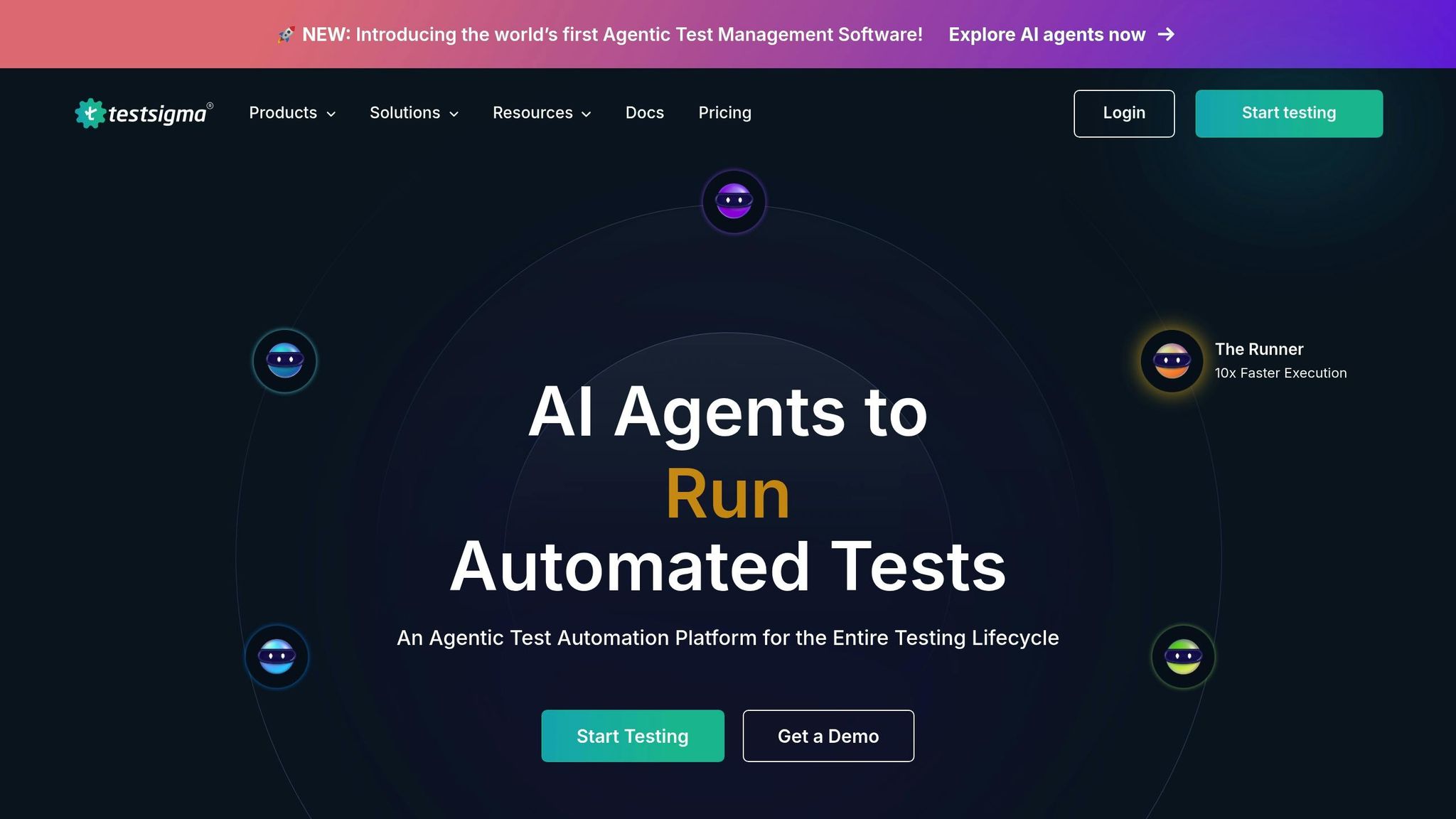
TestSigma is an AI-driven test automation platform that simplifies the creation of test cases by converting plain English descriptions into executable automated tests. This cloud-based tool is especially helpful for teams aiming to make testing more accessible across their organization.
NLP Capabilities for Test Case Generation
TestSigma’s natural language processing (NLP) engine transforms straightforward English instructions – like "Verify the login page accepts valid credentials" – into fully functional test cases without requiring any coding skills. It can also handle more complex scenarios, breaking them down into logical test steps to ensure thorough testing coverage.
For example, a US-based e-commerce company used TestSigma to automate regression testing by describing scenarios such as "Check that the checkout process completes with valid payment details." This approach significantly cut down manual work, sped up release cycles, and made onboarding new testers easier thanks to its language-based method. The combination of natural language comprehension and automated test maintenance makes TestSigma a standout in its category.
Integration with UI/UX Workflows
TestSigma seamlessly integrates with project management and CI/CD tools like JIRA, enabling teams to generate test cases directly from user stories. This ensures that testing stays aligned with the original design intent, reducing miscommunication and speeding up validation cycles.
One of its standout features is self-healing scripts, which automatically adjust to changes in the user interface. This minimizes the time spent on maintaining test scripts and ensures reliability. This capability is particularly beneficial for teams working with frequently updated interfaces or evolving design systems, as it reduces the typical maintenance burden of automated test suites.
Support for Prototyping and Validation
Beyond automation, TestSigma supports early-stage validation by generating and running test cases based on design specifications. Teams can describe new user flows in plain English and instantly test them against prototypes or staging environments.
This functionality pairs well with tools like UXPin, allowing teams to validate user interactions and finalized UI components quickly. With support for web, mobile, and API testing, TestSigma ensures seamless validation across all user touchpoints, helping teams maintain consistent functionality throughout their product ecosystem.
Pricing and Accessibility for US-Based Teams
TestSigma offers a free tier alongside paid plans starting at around $349 per month. For larger organizations, custom enterprise pricing is available, with billing in US dollars and compatibility with US-based payment methods. This pricing model makes TestSigma an attractive option for teams of varying sizes looking for AI-powered test automation.
Its cloud-based setup is ideal for distributed teams in the US, featuring real-time collaboration tools that allow multiple users to work on test cases simultaneously. The platform also adapts to US time zones, local date formats, and provides customer support during standard US business hours. TestSigma holds an impressive 4.7 out of 5-star rating on major software review platforms, with users frequently highlighting its ease of use, NLP capabilities, and collaborative features.
TestSigma claims to enable teams to create test cases up to 70% faster than traditional manual scripting, achieving 90% or higher test coverage – a significant leap compared to the typical 30% coverage seen with manual methods. While it shares some similarities with other tools, its real-time collaboration and self-healing features make it a game-changer in accelerating the testing process from design to execution.
Feature Comparison Table
The table below provides a side-by-side look at key features, integrations, and pricing for the seven tools discussed earlier. It serves as a quick reference to evaluate each tool’s strengths and unique offerings.
| Tool | NLP Capabilities | Supported Platforms | Design Tool Integration | Pricing (USD) | Key Features |
|---|---|---|---|---|---|
| UXPin Merge AI | AI-powered test case generation from design components | Web, Mobile (via React) | Native (UXPin, Figma) | From $39/editor/month | Design-to-code workflows, reusable UI components, AI design tools |
| Testim | AI/NLP for test creation with smart locators | Web, Mobile | Limited | From $500/month | Self-healing tests, reusable steps, CI/CD integration |
| Functionize | NLP-powered test creation from user stories | Web, Mobile, API | No direct, CI/CD focus | Custom/quote-based | Context-aware automation, cloud execution, smart analytics |
| TestCraft | Visual modeling with AI-driven maintenance | Web | No direct | Custom/quote-based | Visual test flow design, continuous testing capabilities |
| mabl | AI/NLP for test creation with auto-healing | Web, API | No direct | From $250/month | Unified platform, scriptless automation, AI-driven insights |
| ACCELQ | AI-driven NLP engine for codeless automation | Web, Mobile, API, Desktop | Jira, Jenkins | From $390/month | Model-based testing, test scenario prediction, broad integrations |
| TestSigma | Plain English test creation via NLP | Web, Mobile, API | No direct | Free tier / $349⁺/month | Open-source option, cloud-based, real-time collaboration |
Platform Support
When it comes to platform coverage, ACCELQ leads the pack, supporting web, mobile, API, and desktop applications. TestSigma also offers robust platform support for web, mobile, and API testing, with the added flexibility of both free and paid plans. In contrast, TestCraft focuses exclusively on web applications.
Design Tool Integration
Integration with design tools sets UXPin Merge AI apart. Its native compatibility with UXPin and Figma bridges the gap between design and QA workflows. Other tools prioritize integrations with CI/CD pipelines and project management platforms rather than direct design tool connectivity.
Pricing Options
Pricing varies significantly across tools. Functionize and TestCraft use custom pricing, typically for larger teams. mabl starts at $250/month, while TestSigma provides a free tier, making it appealing for smaller teams or those new to NLP-based testing.
NLP Capabilities
NLP features differ widely. TestSigma simplifies test automation by converting plain English descriptions into executable tests, making it user-friendly for non-technical team members. Functionize focuses on generating context-aware tests from user stories, while ACCELQ uses a model-based NLP approach to enable codeless automation across multiple platforms.
Automatic Test Maintenance
Automated test maintenance is a standout feature for some tools. Both TestSigma and mabl offer self-healing capabilities, which automatically update test scripts when user interfaces change – saving time and reducing manual effort.
Additional Insights
All tools support pricing in USD and provide customer support aligned with US business hours. TestSigma holds a strong reputation, with a 4.7 out of 5-star rating on major software review platforms. These features highlight how each tool fits into the design-to-test workflow, catering to different team needs and technical requirements.
Conclusion
NLP-based test case generation tools are transforming quality assurance in the fast-moving world of UI/UX development. By allowing test creation through simple English descriptions, these tools break down barriers between technical and non-technical team members. The result? A quicker transition from design to testing, improved accuracy, and a more streamlined process overall.
One example speaks volumes: a company managed to cut manual test creation by over 60%, speeding up releases while reducing post-release bugs. This highlights how these tools not only enhance test coverage for new UI features but also empower product managers to take an active role in writing test cases.
Better collaboration is another major win. When designers and product managers can describe expected behaviors in natural language – and those descriptions are converted into detailed test cases – it creates a more inclusive and efficient workflow. This is especially crucial in UI/UX projects, where requirements shift rapidly, and clear, ongoing communication is essential. These collaborative benefits help teams make smarter decisions when selecting the right testing tool.
As highlighted earlier, the choice of tool should align with your team’s specific needs. For teams focused on integrating design and testing workflows, platforms like UXPin Merge AI could be a strong fit. If coding expertise is limited, tools like TestSigma that support plain English test case creation might be more practical. On the other hand, enterprise teams managing complex applications may benefit from model-based tools like ACCELQ or cloud-based platforms such as Functionize.
Over time, adopting NLP-powered tools can lead to significant cost savings. While the upfront investment may seem steep, the long-term benefits – like reduced manual effort, faster test creation, and fewer production defects – more than make up for it. Teams can then shift resources from repetitive tasks to more valuable activities, such as exploratory testing and refining the user experience.
Looking ahead, NLP-powered test automation is poised to become a staple in agile and DevOps workflows. With advancements in AI and NLP, testing will become even more accessible to a diverse range of stakeholders. This evolution supports a seamless design-to-code workflow, enabling faster feedback loops and ensuring smoother product development from start to finish.
FAQs
How does NLP-based test case generation help bridge the gap between technical and non-technical team members?
Natural Language Processing (NLP) makes test case generation much more straightforward by converting technical requirements into plain, easy-to-understand language. This approach bridges the gap between technical and non-technical team members, improving communication and teamwork.
With automated tools that use natural language to create test cases, even non-technical stakeholders can get involved in the testing process. This ensures all requirements are covered thoroughly and minimizes the risk of misunderstandings.
What should teams look for when selecting an NLP-based tool for test case generation?
When selecting an NLP-powered tool for test case generation, it’s essential to prioritize factors like accuracy, ease of use, and scalability. The tool should align with your specific testing requirements, such as managing intricate language patterns or supporting various programming languages.
Look at how seamlessly the tool fits into your current workflows. Features like AI-driven suggestions, the ability to customize test cases, and compatibility with your development environment can make a big difference. Also, assess the availability of support resources and regular updates to ensure the tool remains reliable and effective over time.
What are the benefits of self-healing capabilities in test automation tools for software development?
Self-healing features in test automation tools make life easier for developers by automatically identifying and resolving issues in test scripts whenever changes are made to the application. This eliminates much of the manual work, freeing up time and energy for other tasks.
These tools ensure that test cases stay operational even when there are updates to the UI or underlying code. As a result, teams can maintain reliable test coverage, focus on creating new features, and deliver updates more quickly – all while boosting productivity and ensuring high-quality software.
